On the whole, Europeans did alright naming New World plants and animals. An example, they called a large brown bat species the big brown bat – kudos for accuracy. A few labels missed the target, like the sunflower relative dubbed Jerusalem artichoke, even though it’s unrelated to either. Some names are partly right: the tufted titmouse has a tuft, but it’s a songbird, not a mouse.
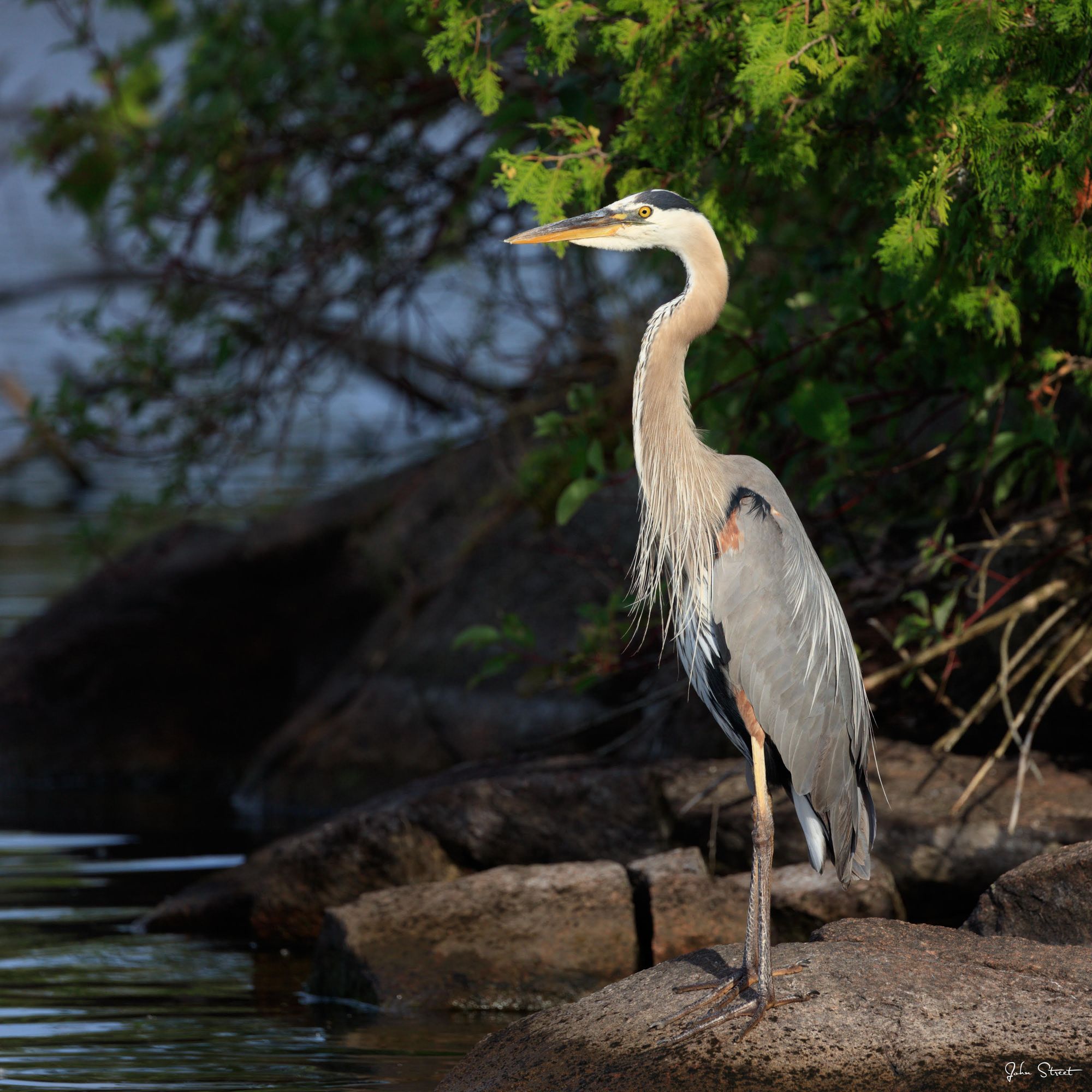
And the great blue heron (Ardea herodias), the largest North American heron, is definitely great, but if you’re thinking cerulean or cobalt, you’ll be disappointed. Some are more brownish, and one subspecies in Florida is white. But hey, two out of three accurate names ain’t bad.
To be fair, most great blue herons in our part of the world are primarily a light grey-blue at rest. When they take to the air, the darker blue flight feathers are exposed, showing off their snazzy two-tone flight suits. Juveniles tend to dress entirely in drab blue, but adults sport a bright orange-yellow beak, a white crown and a dark head crest. Obviously they’re big, although females are about 10% smaller than males. The great blue (heron, not whale) ranges from 45” to 54” tall, with a wingspan between 66” and 79”. Weight can vary from 4 to 7.9 pounds.
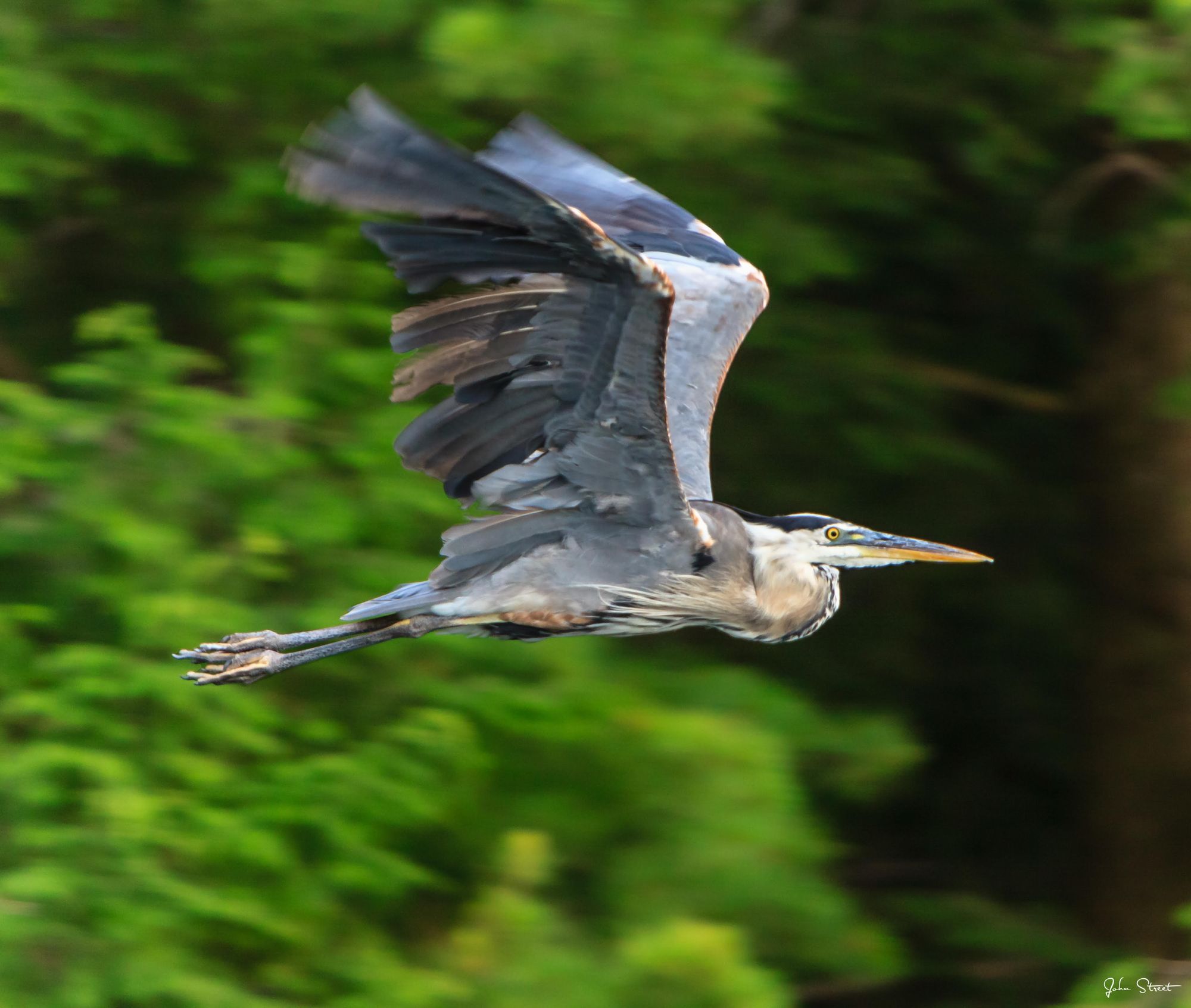
Great blues are found throughout most of North America depending on the season. Their breeding range can extend well into northern Canada, sometimes close to the Arctic, and their winter territory encompasses most of Central America. On the Pacific coast from Alaska south to Mexico and across the southern half of the US, herons may be found year-round.
One of the reasons great blue herons are so widely distributed is that they are generalist feeders, making them highly adaptable. Their menus range from fish, frogs and turtles (!) to insects, small mammals and water birds. Great blues hunt mostly in freshwater environments, but are at home in saltwater marshes and tidal pools as well. In fact, they sometimes frequent Caribbean islands as far south as the Lesser Antilles.
Equipped with harpoon-bills and impressive reflexes, herons are well-suited to hunting. But their bills are also used affectionately during courtship, to communicate (bill-snapping), and as you might expect, for protection.
Ages ago I became licensed by the New York State Department of Environmental Conservation as a Wildlife Rehabilitator. In studying for the written exam, one item which became etched into my mind was a graphic of a heron stabbing someone in the eyeball. Yeah. Turns out you have to cover an injured heron with a blanket before you pick it up. So whenever my daughter, whose name is Heron (really) picks up scissors or another sharp tool, I always afford her an added measure of respect.
Great blue herons start breeding in their second year, and if they live to their species potential, might continue for another fifteen years. They are monogamous during each breeding season, but get to “remarry” every spring. If herons could only write, I’m sure they’d have the hottest Harlequin Romance books in the business.
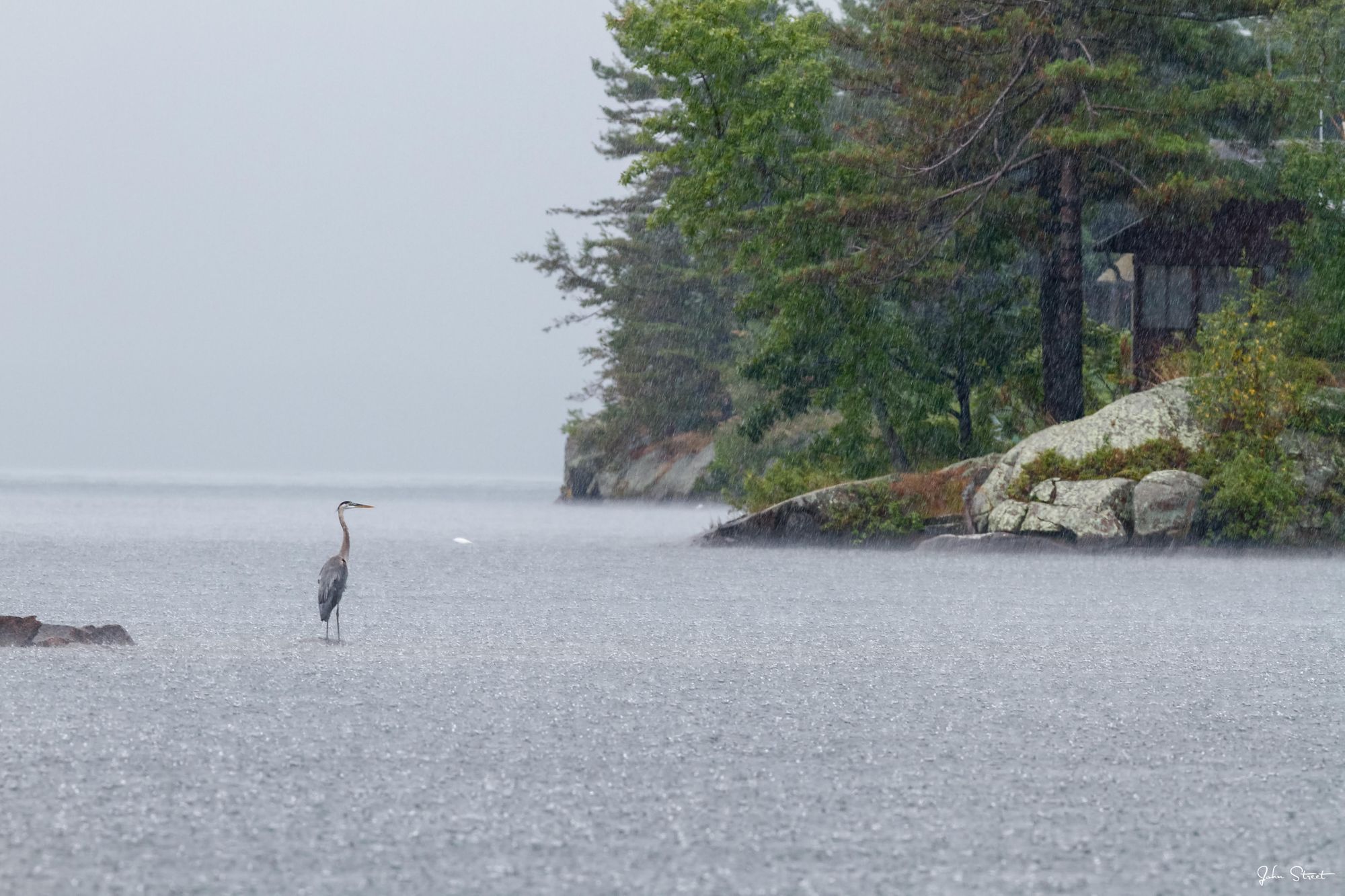
The preferred heron nest location is high in a mature tree in a wetland. In our region this means a dead tree within a beaver pond. In remote areas, human disturbance is more likely to disrupt their reproductive success, though herons have been known to acclimate to highways and other human infrastructure. They nest in groups, occasionally with hundreds of nests in a single colony. Apparently the correct term is a heronry, though I had always called it a rookery. In technical parlance, these nesting sites are “wicked cool.”
The unkempt nests are striking to behold, being made of sticks, and 35 to 50 inches across with a depth of 20 to 35 inches. Generally the nests are used year after year, getting refurbished every spring. Egg clutches vary from two to six, with fewer down south, and more in the far north. In the northern US and southern Canada, the official mean is between 3.9 and 4.1, which I would call “four.”
Since herons return to their nests by dusk, you can surmise the direction of a heronry by watching the direction the birds take. If you are fortunate enough to find a heronry, bring binoculars and keep your distance. You may be treated to the return ritual when adults (both males and females incubate eggs and feed the young) return to the nest.
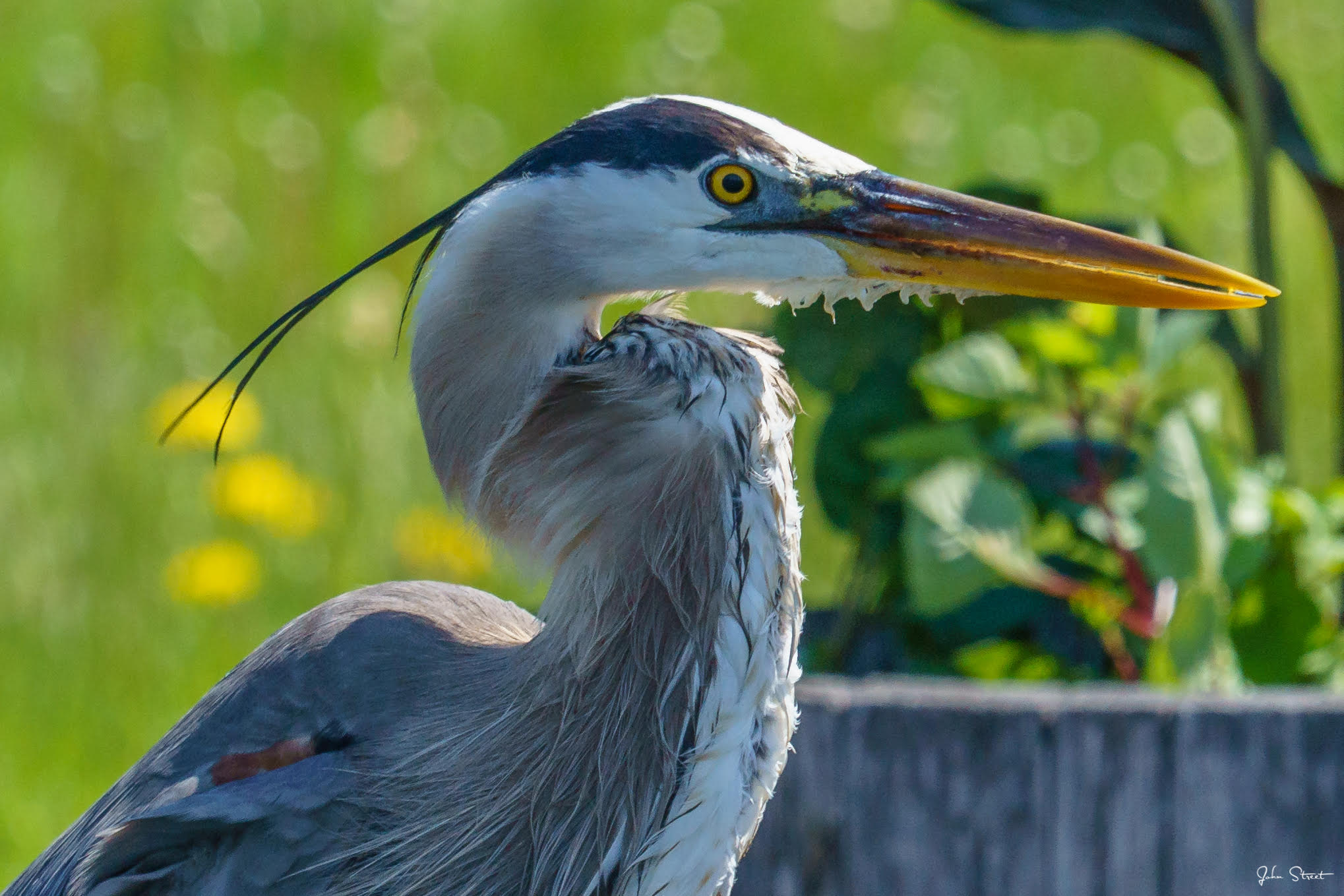
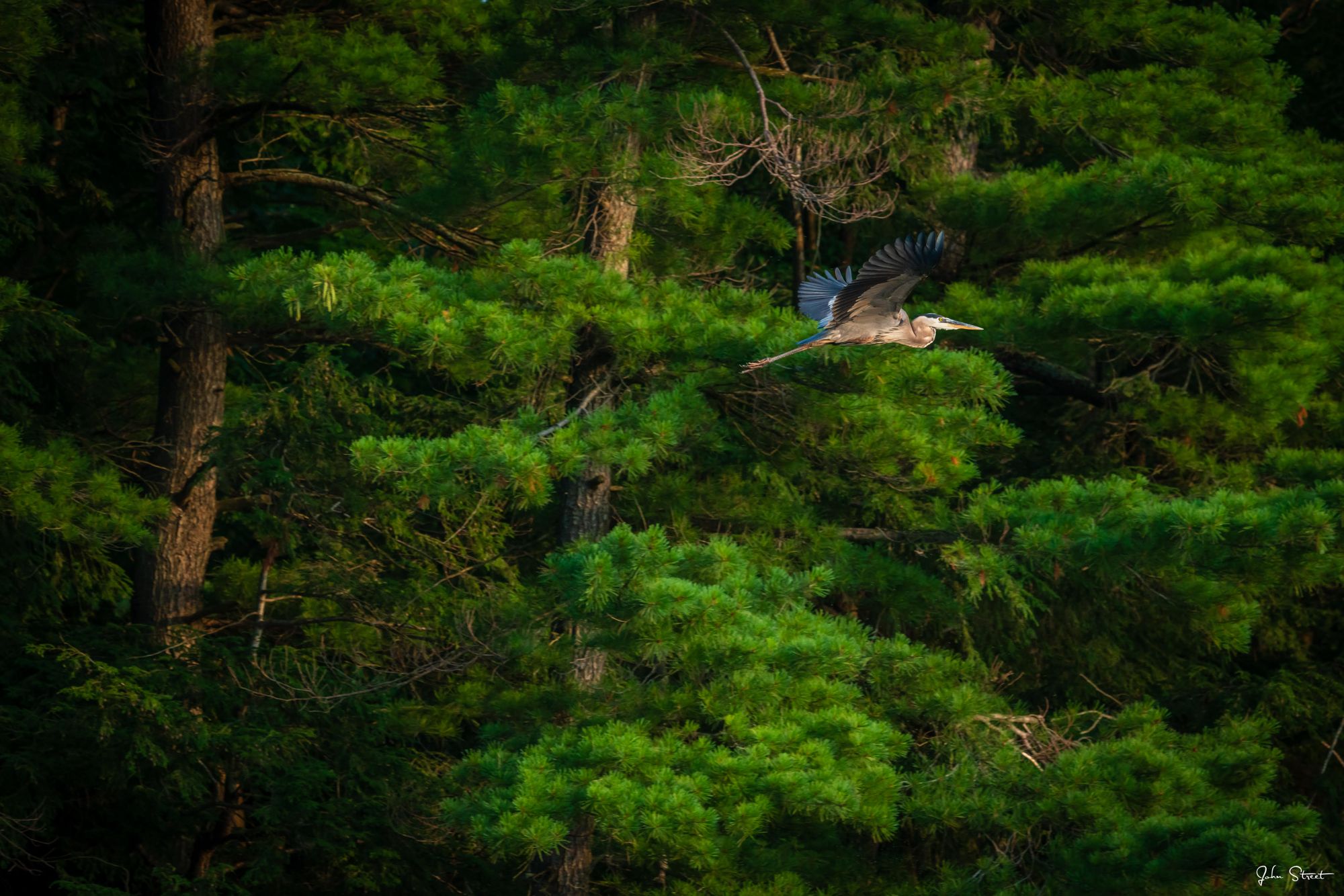
Adults may touch bills with their mate in a show of affection before lovingly barfing pre-digested fish and frog mush into the open beaks of their babies. I have seen the young waiting for dad or mom to come back with carry-in food, their beaks pointed upward and waving gently like some strange nest-grass blowing in the wind.
For many years I lived on a beaver pond-studded piece of land in the St. Lawrence Valley. It had two different, though small, heronries, and a few herons would wing by each evening near dark. Somehow they sensed I was on the screen porch watching, and they always let out their alarm call, a guttural “gronk” (sometimes translated as fronk or gronk; linguists are still puzzling it over), as they passed. But herons have a broader repertoire of voices. They coo and cluck to each other on the nest, and clack their bills. I still take note of the first heron sighting of the spring, and of the last time I see one in the late fall or early winter.
Even though great blue herons are big, weapon-wielding birds that surround themselves with water, they still fall prey to eagles, hawks, and great horned owls (which also rate a two-out-of-three for name accuracy). Since herons are a top or near-top predator, they are also vulnerable to environmental toxins which get magnified at each level of the food chain. Human disturbance and habitat loss are other challenges faced by herons.
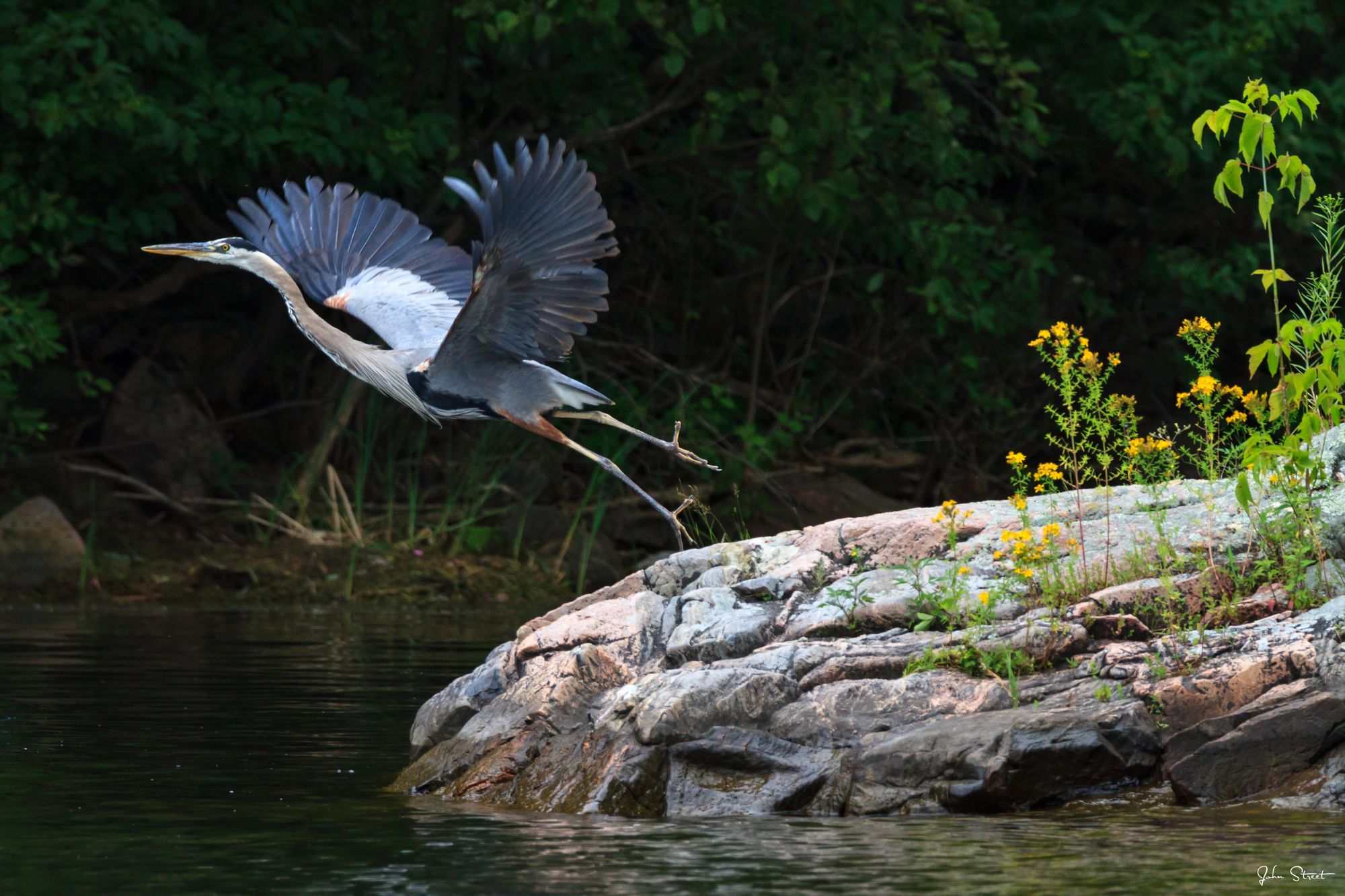
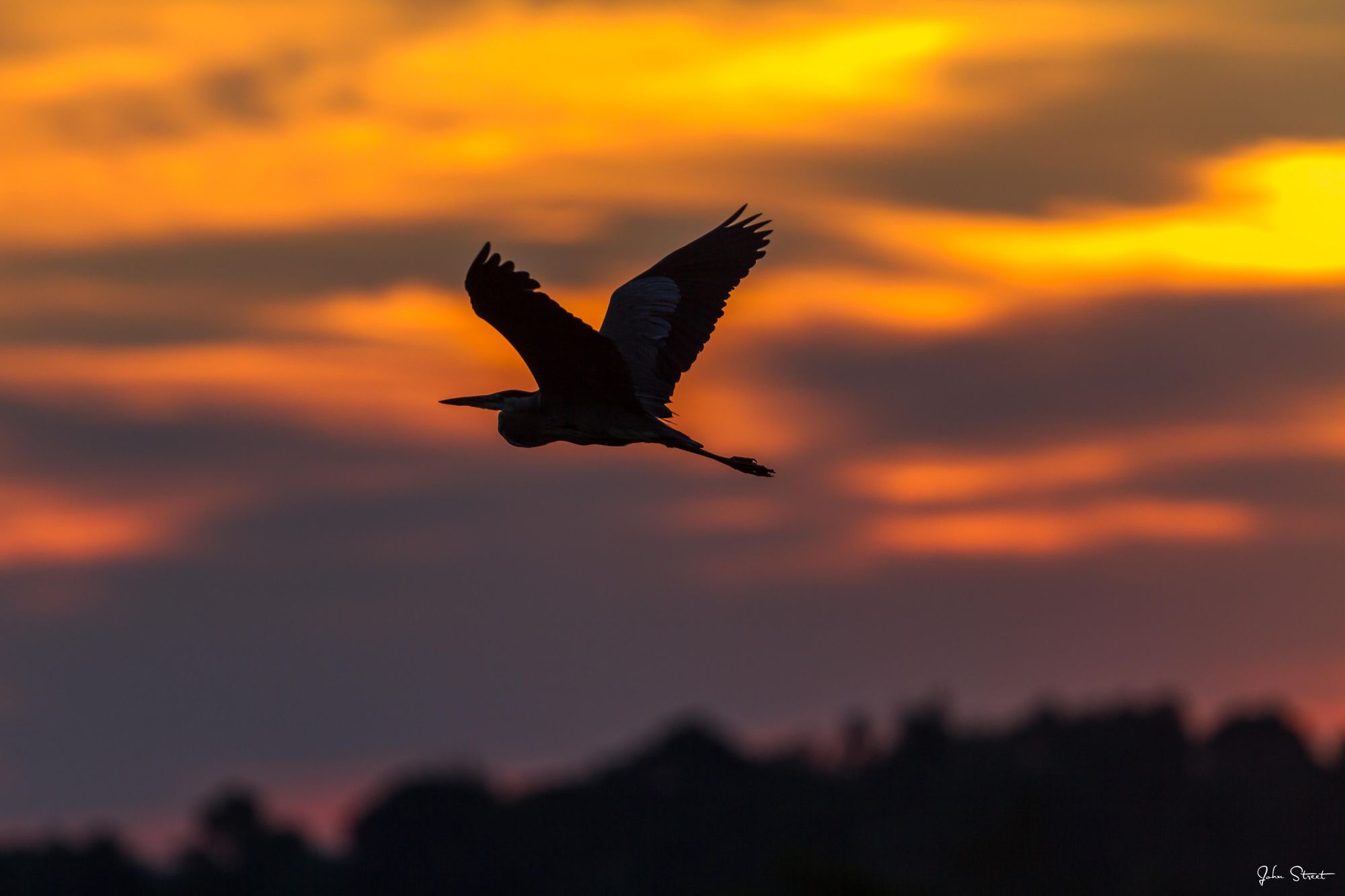
In the past they were frequently shot for the same reason that road signs get shot – they are big targets that even a fool can hit – but this is a lesser threat now. In spite of everything, the Audubon Society lists their population as “probably stable.” I hope that’s an accurate report.
By Paul Hetzler
A Certified Arborist and former Cornell Extension educator, Paul Hetzler lives in Val-des-Monts Québec. This is Paul's 12th article for TI Life, and each one is unique in that you will learn about the world around us - and you will smile for sure.
Paul wants us to know he usually capitalizes the word ‘Heron.’ (Editor's note... for those of you not in the "know" Paul's daughter's name is HERON, and TI Life discovered she is an artist in her own right... see December 2019.

Photographs by John Street
John Street is a video Producer/Director at his company InPoint Productions, Inc. San Diego, CA. The list of productions is long and impressive, such as over 50 event-highlight videos filmed and edited for Fortune 500 companies, or - Travel, film and supervise production crews in 40 U.S. cities, plus France, UK, Ireland, Spain, Italy, Tunisia, Germany, Czech Republic, Jamaica, the Bahamas, Canada, Mexico and 5 of the Hawaiian Islands. Yes, John Street is well known in his industry. Luckily for us, John spends his vacation in the Thousand Islands. This summer, 2020, John was the guest speaker for the Thousand Islands Association's annual meeting on Zoom. His talk, which includes dozens of photographs, can be found at https://www.youtube.com/watch?v=Bnni0YchKAI.
Posted in: Volume 15, Issue 8, August 2020, Nature
Please click here if you are unable to post your comment.
